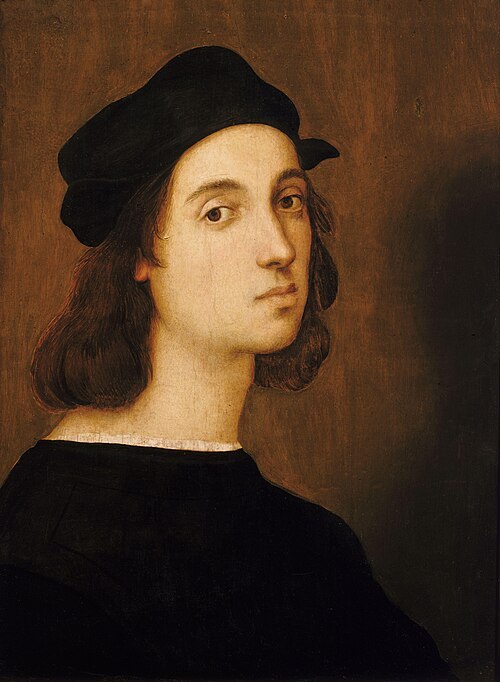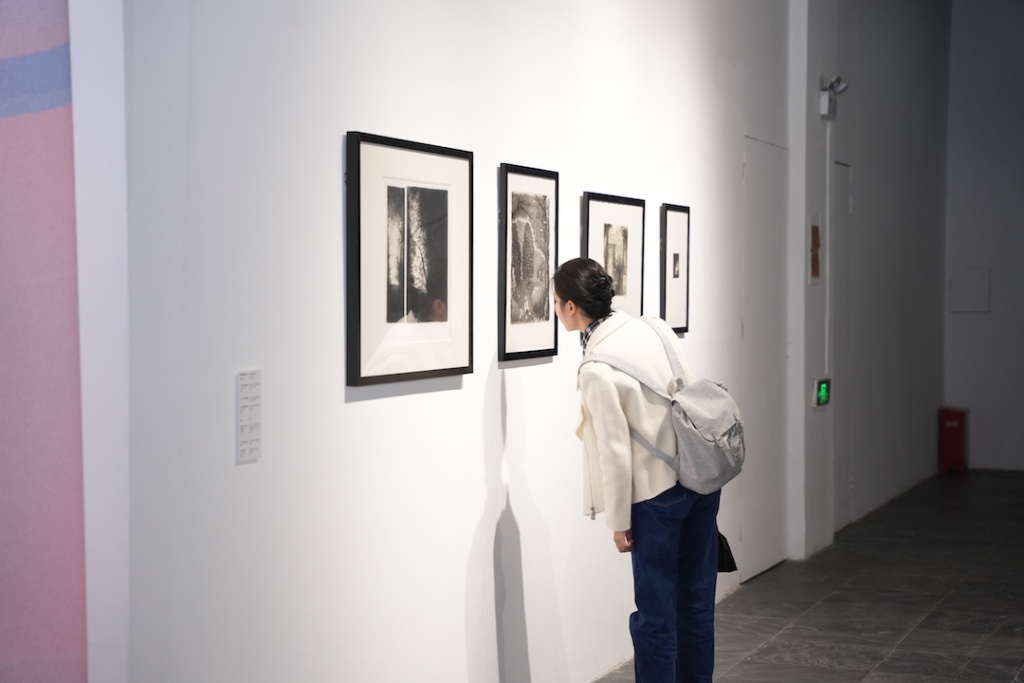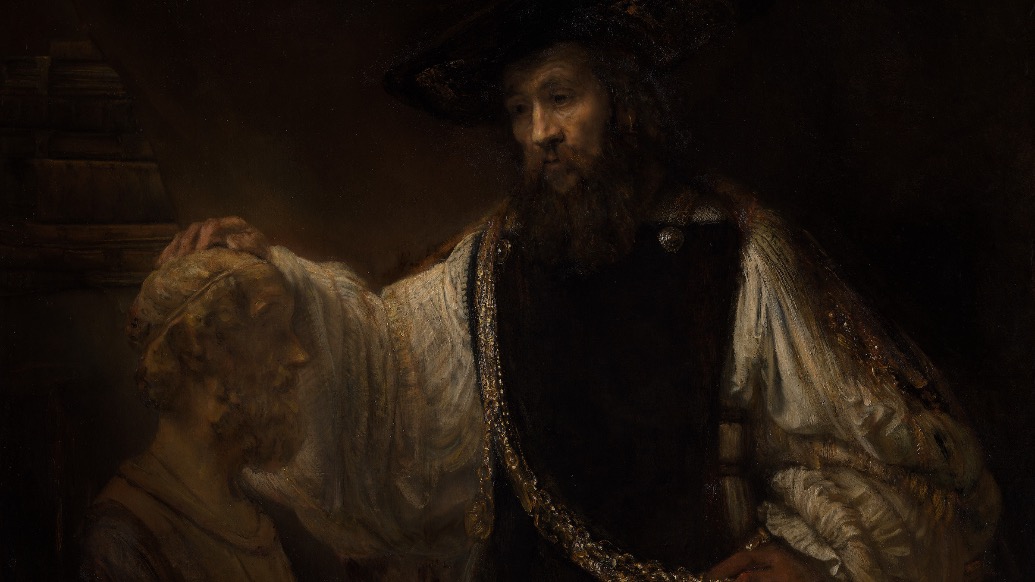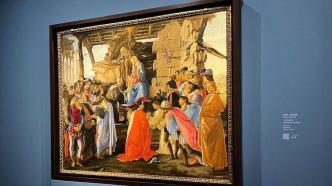
On the afternoon of April 27, the much-anticipated "Botticelli and the Renaissance" opened at Shanghai Dongyi Art Museum, presenting ten works by the Renaissance art master Botticelli, as well as Filippino Li Pi, Perugino, Lorenzo di Creti, Cosimo Rosselli and nearly 30 Renaissance artists.
From large-scale religious paintings such as Botticelli's "Pilgrimage of the Magi", "Goddess Pallas Athena and the Centaur", to Botticelli's studio works, to Renaissance painters' portraits of the Medici family And other noble portraits, the exhibition uses Botticelli as the cut, showing the audience the art of the Renaissance.
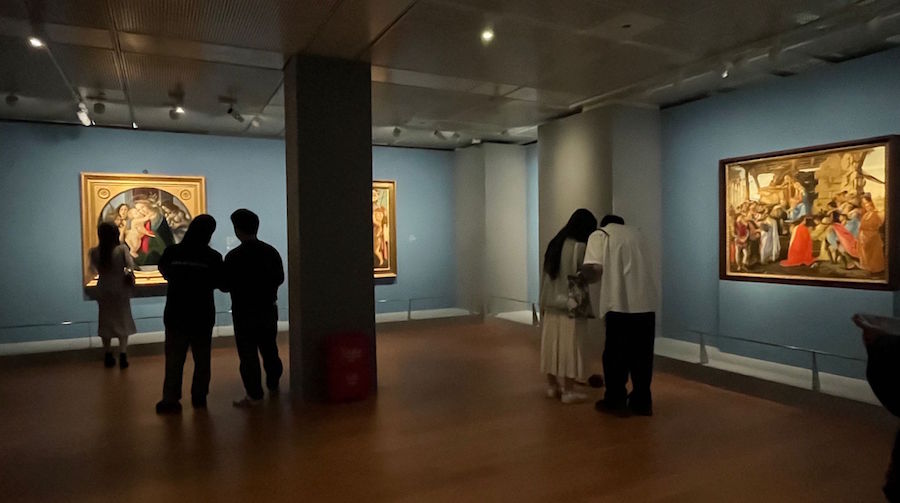
Exhibition hall scene
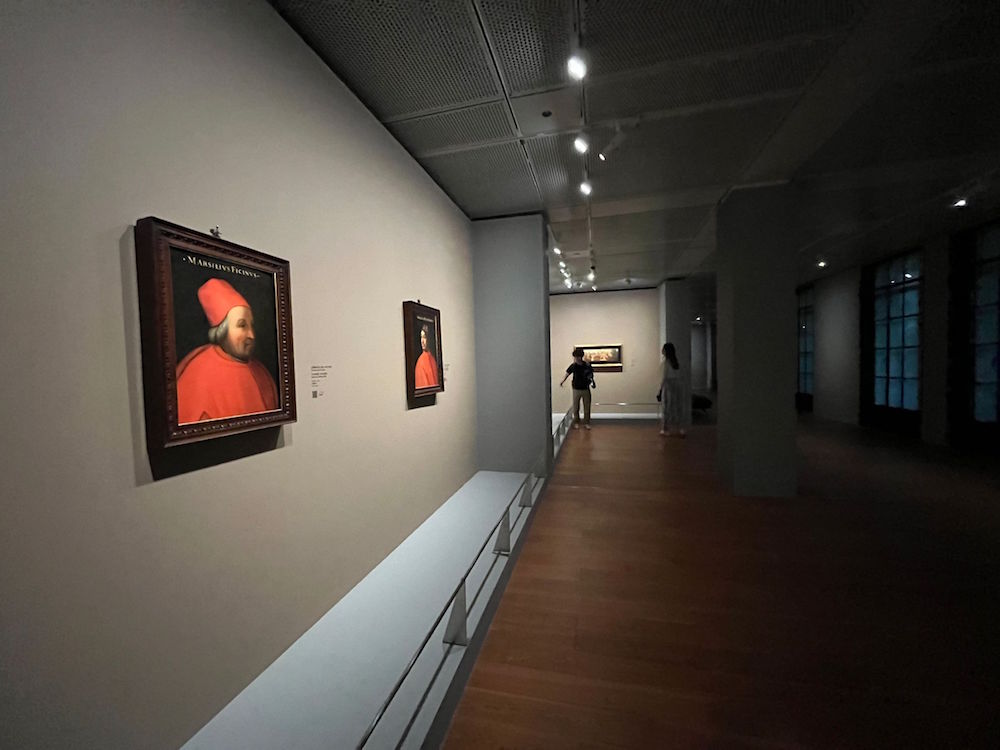
Exhibition hall scene

Exhibition hall scene
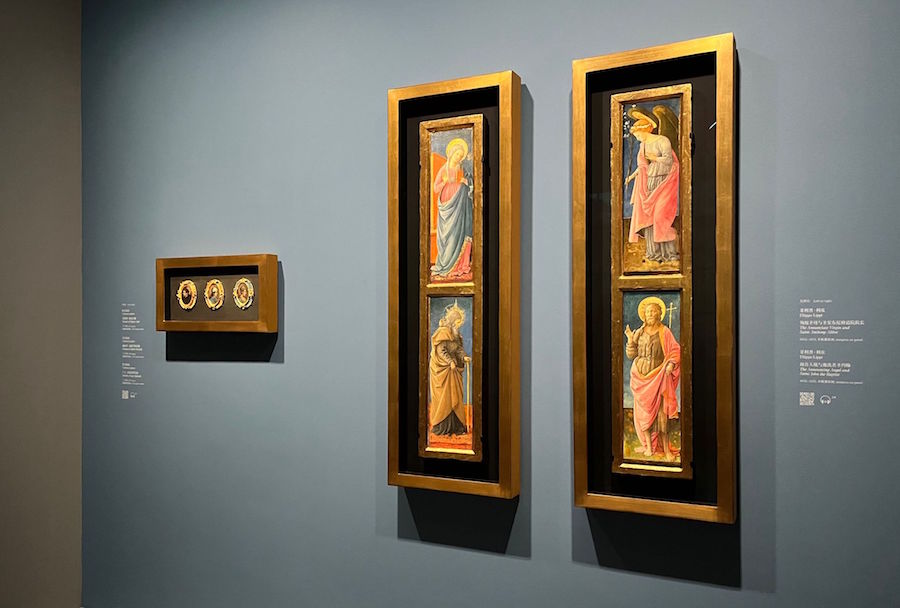
Exhibition hall scene
Entering the exhibition hall, the first thing that catches the eye is Botticelli's "Portrait of a Young Woman "Simoneta Vespucci"", which depicts a legendary, beautiful and elegant young woman, who is considered to be Botticelli. Muse of Ticelli.

Botticelli, "Portrait of a Young Woman "Simonetta Vespucci""
Then, after walking around a few corners, we came to the blockbuster work of the exhibition "The Pilgrimage of the Three Magi". This painting shows three kings or sages paying homage to the infant Jesus. Botticelli's depiction is an innovation: the Madonna and Jesus are placed on the same side, in order to provide space for the arrival of the pilgrims, compared to the conventional one.
Xie Dingwei, executive director of Dongyi Art Museum, told The Paper, "This is one of Botticelli's most famous religious paintings. "The Pilgrimage of the Three Magi" was a religious theme at that time. In this exhibition, we exhibited Botticelli's Two of Ticelli's Pilgrimage of the Magi. One of them containing perhaps the portrait of Botticelli is the most peculiar." It is generally believed that the right side of the painting, facing us, in the foreground, is wrapped in a light brown cloak The young man is the painter Botticelli. He was about 30 years old at the time, and his self-portraits appear alongside many well-known personalities.

Exhibition hall scene, Botticelli's "The Pilgrimage of the Magi"
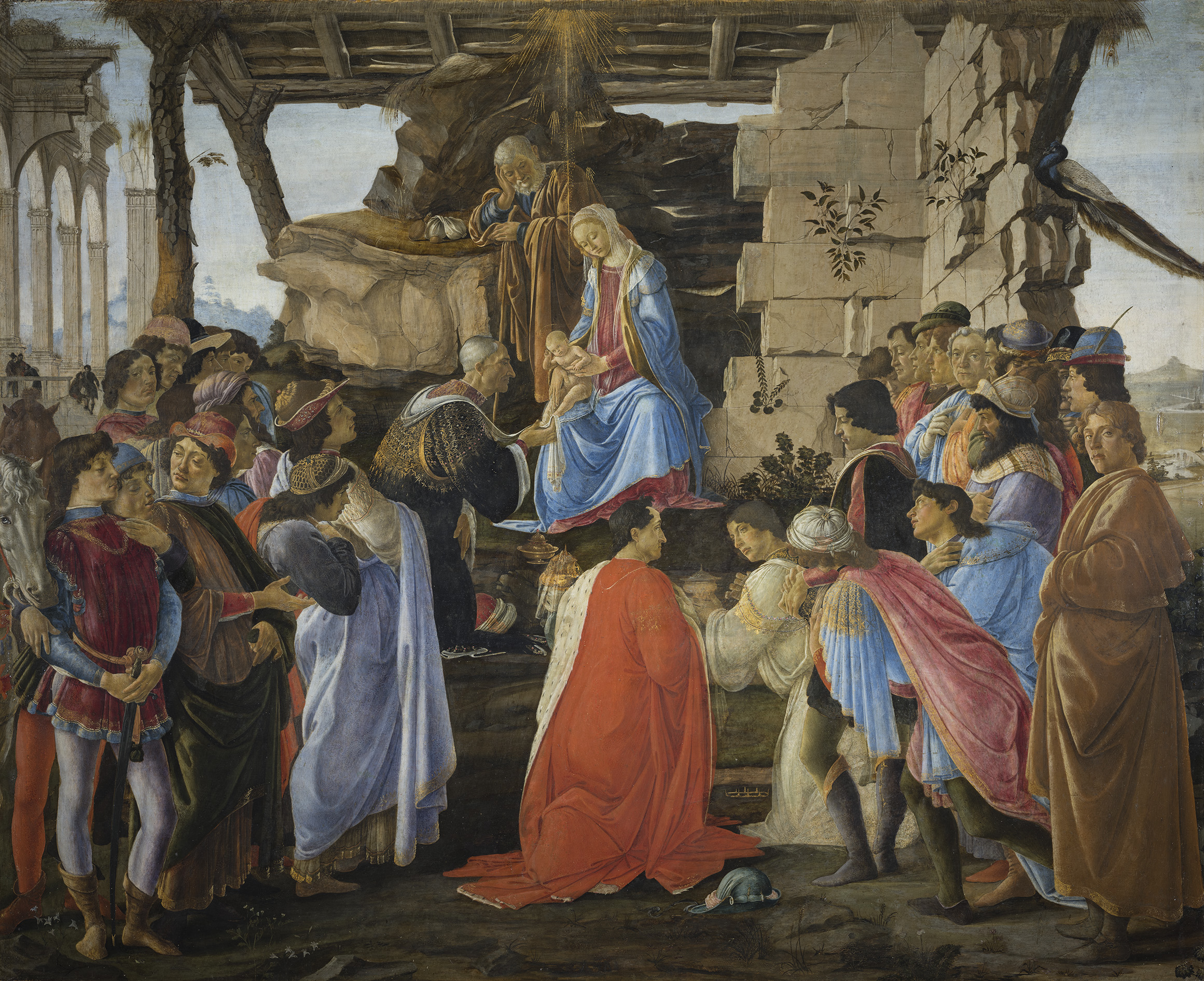
Botticelli's Pilgrimage of the Magi
Why are Botticelli's portraits so special? Regarding this point, the curator of the exhibition, Daniela Parenti, told reporters, “In the early Renaissance, artists only painted portraits for commissioners (or very important people), while painters were generally I don’t think I’m important, so I don’t try to paint an image of myself.”
Associated with this story are the three small portraits on the opposite side. It was the work of an unknown painter in the 18th century, one of which was a portrait of Botticelli drawn by the painter at that time, and on the side, there was a portrait of Botticelli's teacher Philip Lippi.
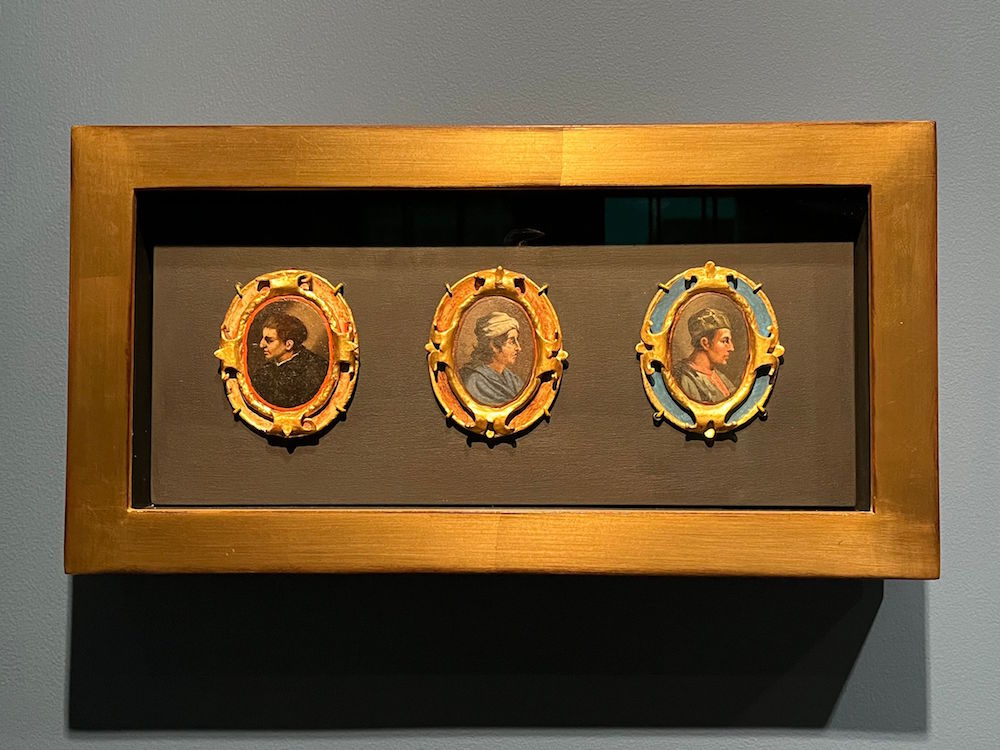
Portraits by unknown 18th-century painters, Philip Lippi on the left and Botticelli in the center

Portrait of Botticelli by an unknown 18th century artist
The exhibition "Botticelli and the Renaissance" is an exhibition about the Renaissance with Botticelli as the starting point. The term "Renaissance" originated with historians in the 19th century and defined a historical period from the early 15th century to the early 16th century marked by a revolution in thought and its impact on figurative art. Driven by the city's economic prosperity and military achievements, after the birth of the Renaissance movement in Florence, based on the interest in ancient civilizations, the study of ancient Greek and Roman literature emerged from a historical perspective. Renaissance societies saw themselves as the heirs of ancient civilizations, whose ideas and expressions were reproduced after the "dark" Middle Ages. Knowledge of the ancient world means once again placing humans at the center of the universe, and through the simultaneous study of antiquity and nature, humans have the ability to control and transform nature through technological genius.
Among the many artists of the Renaissance, Botticelli, the protagonist of this exhibition, is the most representative one. In 1445, Sandro Botticelli was born in a middle-class family in Florence, Italy. It is said that because of his obesity, he was nicknamed "Botticelli" (Italian "small barrel") by his brother. Legend has it that Botticelli was rebellious when he was young, and was sent by his father to learn skills in a gold and silver workshop (no documented records). Botticelli, like boys of the same age, was sent to a certain workshop to learn skills from a master when he was a teenager. At the age of fifteen, he was sent by his father to the studio of Philip Lippi, a famous painter in Florence, to learn painting.

Botticelli's Madonna and Child
Master Lippi led Botticelli to depict elements or characters in real life on religious or allegorical themes, skillfully blending religion and secularity, sacred emotion and the real world in his works. Therefore, the images of the Madonna, Son and allegorical characters they painted all have a soft "filter", with amiable, light movements, and secular postures that are elegant in the wind.
Botticelli quickly mastered the art of painting, established his own studio in 1470, and was followed by Lorenzo de' Medici, becoming a painter respected by the Medici family. Florence also entered the "golden age" in history during this period.
In the exhibition hall, "Goddess Pallas Athena and the Centaur" is one of the largest works and also the most visually impactful. This is a painting in which Botticelli brings subjects and themes from the ancient world to life and updates them.
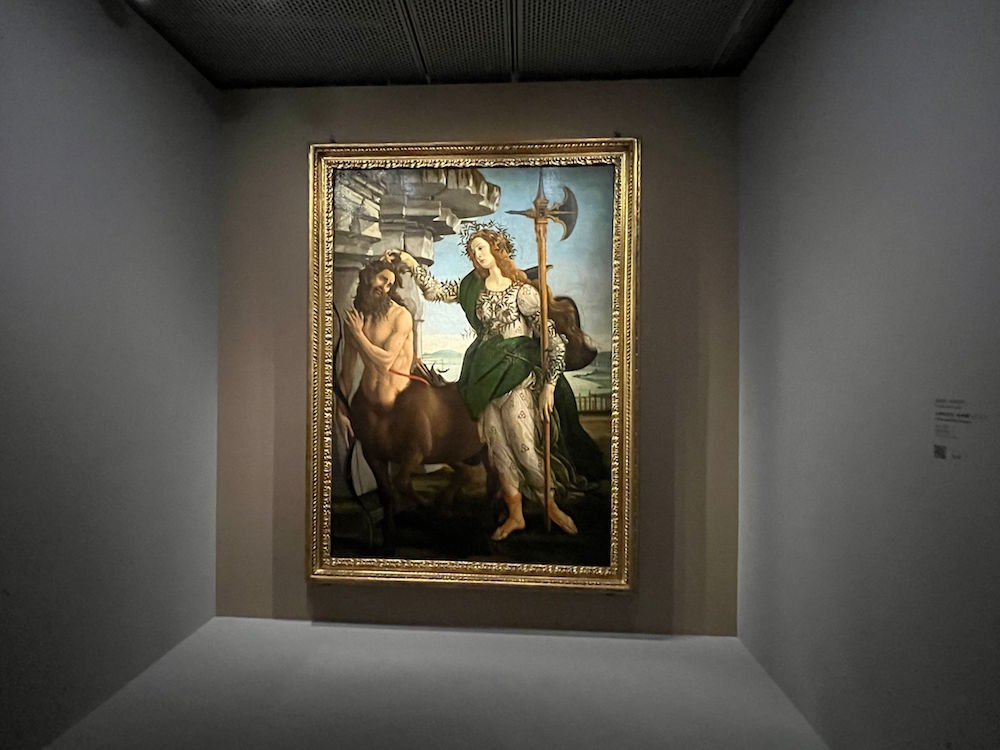
Exhibition hall scene, Botticelli's "Goddess Pallas Athena and Centaur"

Botticelli, The Goddess Pallas Athena and the Centaurs
Besides Botticelli, the exhibition is also an opportunity to peek inside the Medici family. The Medici family originally came from Tuscany, Italy, and later moved to Florence. Giovanni di Bicci de' Medici founded the Medici Bank to issue loans, hold deposits and issue the most trusted and stable currency of the time, the Florin. Giovanni's son Cosimo (Cosimo) managed well and accumulated immeasurable wealth for the family.
At that time, Florence was a republic, but its politics were still subject to a small number of old money oligarchs. Cosimo was a valiant defender of the republic and was briefly exiled from Florence on trumped-up charges against the oligarchs. But after a popular uprising, the oligarchs were ousted and Cosimo returned triumphantly as a hero and "first citizen of the republic". By this point, Cosimo had used his fame, money, and political influence to great advantage in 15th-century Florence. Of course, his greatest contribution was to the art, architecture and culture of Florence, which became a jewel of the early Italian Renaissance.
After Cosimo, Lorenzo de' Medici became the most famous patron of the arts during the High Renaissance. He is very charismatic and generously sponsored the most outstanding artists in Florence such as Botticelli, Da Vinci, Michelangelo, Verrocchio, etc. The masters created a series of masterpieces for the Medici family, which also turned Florence into the European capital of Renaissance humanism.

Agnolo Bronzino's studio "Portrait of Cosimo I de' Medici" 1540-1543

View in the gallery, Ottavio Giovanozzi, "Portrait of Lorenzo the Great", 1825, marble sculpture
In the exhibition hall, the audience can see the depictions of members of the Medici family by artists at that time and later generations, such as "Portrait of Cosimo I de Medici" from Agnolo Bronzino's studio, and the 19th-century sculpture of Lorenzo by Ottavio Giovanozzi, among others.
In the late 15th century, there were city-state disputes in Italy. After the death of Lorenzo de Medici in 1492, Botticelli also began to go downhill. In order to adapt to changes in the general environment, he gave up mythological themes and focused more on religious themes, and burned many paintings by himself. Although Botticelli died in poverty and loneliness, the precious works of art he left behind have become treasures in art history and have influenced artists of the same generation and younger generations.

Florentine Miniature Painter The Veil of a Nun, circa 1501, tempera gilt on parchment glued on wood

Bartolomeo di Giovanni, Saint Benedict Blessing the Poisoned Wine, 1481-1482, tempera on wood

Unknown painter (imitator of Hieronymus Bosch) Hunting Elephants, circa 1550, oil on canvas
Eike D. Schmidt, director of the Uffizi Gallery, said, "Botticelli's art is a great representative of the beauty and elegance of the early Renaissance. His paintings provide a glimpse into the great changes and innovations in Florence. Cultural and artistic opportunities of the period. And his works provide people with a unique perspective on the role of beauty in art. Whether as masterpieces in art history or simply as beautiful works of art, Botticelli's paintings will surely Captivate and inspire people's attention."
For this reason, in Shiack's view, Botticelli is "the symbol of artistic aesthetics of the Medici family". "The Medici family commissioned many works from Botticelli and other artists. The Uffizi Gallery building was originally built as the government office of the Medici family, so the collection here is regarded as artistic taste and quality standards, while Botticelli's work is considered a reference point for the ideals and values of that period. At the same time, Botticelli's artwork also represents a turning point in the history of art and culture: he was one of the first to accept One of the artists of the Renaissance Neo-Naturalism style, which emphasized the beauty and potential of human beings. Thus, Botticelli's work helped to establish a new standard of beauty and harmony in art."
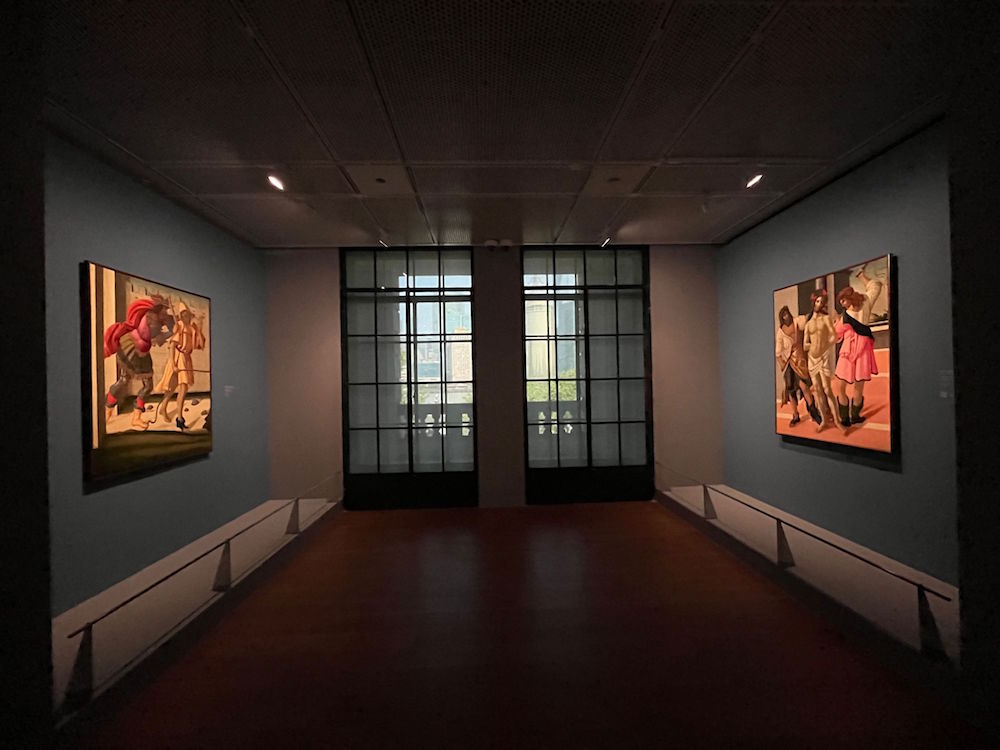
Exhibition hall scene, works from Botticelli's studio
In the exhibition hall, some works come from Botticelli's studio, completed by Botticelli himself and his students, such as "Madonna, Son, St. John and Angel", "Christ on Scourge", " The Road to Calvary, etc. And these works undoubtedly played a key role in continuing Botticelli's artistic concept.
In Florence, religious portraits are essential decorations to express the pious beliefs of the people. Usually smaller in size than altarpieces, these figures were painted on wooden panels, modeled in clay, or carved in marble, sometimes in circular shapes, and could be placed in niches, hung on walls, or placed on small altars at home , to shelter families, newlyweds and future children. In the noble mansions in the 15th century, there were still secular decorative paintings with more personal attributes such as portraits of people. These works were usually painted for wedding commemoration or remembrance of the deceased.

Cristofano del Altissimo "Portrait of Angelo Poliziano"
It is said that the earliest human portraits were presented in profile, imitating the profile coins of emperors engraved in ancient Rome. After the middle of the 15th century, under the influence of the Flemish School, three-quarter profile portraits became popular, so as to better express the state of mind of the characters.
In this exhibition, the audience can also see many portrait paintings, such as Botticelli's "Portrait of a Young Man in a Hat", (biography) Filippino Lippi's "Portrait of a Young Man", Piero Piero · Bunch's "Portrait of a Young Woman", "Portrait of a Young Woman" by an unknown painter (Raphael's valet), etc. From this we can see the artist's research on portrait painting during the Renaissance, as well as the style evolution of portrait painting during this period.
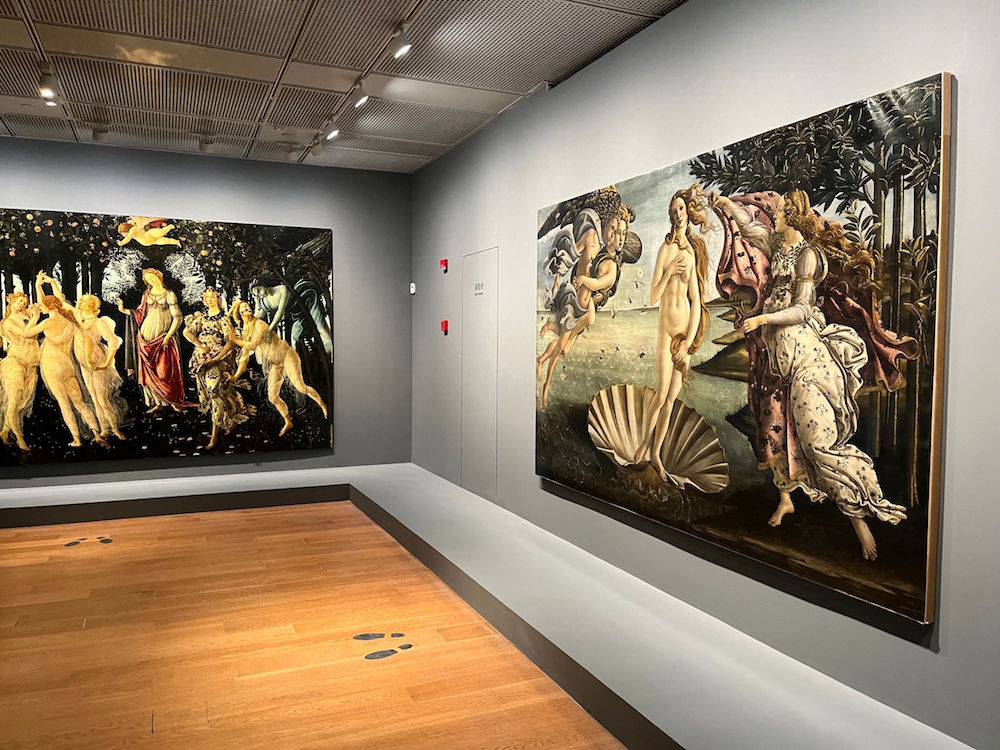
Copy of "Spring" and "The Birth of Venus" at the end of the exhibition hall
At the end of the exhibition hall, there are two additional reproductions - Botticelli's "Spring" and "The Birth of Venus". It is reported that this is a supplement to the exhibition exhibits, intended to let the audience further understand Botticelli's artistic charm.
The exhibition will be on display until August 27.
Attachment: List of Exhibits
Bioggio Dantonio, Justice, 1470-1475, tempera on wood
Cristofano del Altissimo, Portrait of Cosimo il Vecchio, circa 1560, oil on panel
Portrait of Lorenzo il Magnifico by Ottavio Giovanozzi
), 1825, marble sculpture
Sandro Botticelli, Portrait of a young woman "Simonetta Vespucci", 1480-1485, tempera on wood
Cosimo Rosselli, Adoration of the Magi, circa 1470, oil on wood panel
Raffaello del Garbo, Allegory with a view of Florence, 1490-1500, oil on panel
Agnolo Bronzino's Studio Portrait of Cosimo I, 1540-1543, oil on panel
Fiorenzos di Lorenzo, Saint Vincenzo Ferrer, 1495-1500, tempera on wood
Bartolomeo di Giovanni, Saint Benedict blessed the poisoned wine, 1481 – 1482, tempera on wood
Bartolomeo di Giovanni, The rescue of Saint Placidus, 1481 – 1482, tempera on wood
Florentine miniature artist Nun's dressing, circa 1501, tempera gilt on parchment glued on wood
Borghese Master of the Circle, Saint Francis receives the stigmata, 1485-1495, oil on panel
Jacob del Celayo, Queen Vasti's Banquet, circa 1485, tempera on wood panel
Jacopo del Celayo, Triumph of Mardocheus, circa 1485, tempera on wood
1441 Master (biography) Hercules and the Nemean lion circa 1450, tempera on wood
1441 Master (biography) Hercules and Cacus, circa 1450, tempera on wood
Filippino Lippi (biography), Portrait of a young man, 1485-1490, oil on panel
Piero Bunch, aka Piero del Pollaiolo, Portrait of a young woman, circa 1480, oil on wood panel
Portrait of a young woman by unknown artist (Raphael's valet), circa 1505, oil on panel
Holton Circle Master, Adoration of the Child with Saint John and angels, 1500-1510, oil on panel
Unknown painter (follower of Botticelli), Madonna and Child, 1490-1500, tempera on wood
Maradi's Master Kiss of Judas, 1500-1510, tempera on wood
Cristofano del Altissimo, Portrait of Marsilio Ficino, circa 1560, oil on panel
Cristofano del Altissimo, Portrait of Angelo Poliziano, circa 1560, oil on panel
Lorenzo di Creti, Venus, 1490-1495, oil on canvas
Sandro Botticelli, Pallas and the centaur, 1480-1485, tempera on canvas
Luca Signorelli, Allegory, 1510-1515, oil on panel
Lucas Cranach's studio, The dream of Paris, circa 1520, oil on panel
Bonifacio de Pitati, The story of Muzio Scevola, circa 1510, oil on panel
Unknown painter (imitator of Hieronymus Bosch), The besieging of an elephant, circa 1550, oil on canvas
Portrait of Filippo Lippi by unknown artist, 18th century, oil on parquet
Portrait of Sandro Botticelli by unknown painter, 18th century, oil on parquet
Portrait of Luca Signorelli by unknown artist, 18th century, oil on parquet
Philip Lippi, The announcing Angel and Saint John the Baptist, 1452-1453, tempera on wood
Philip Lippi, The Annunciate Virgin and Saint Anthony Abbot, 1452-1453, tempera on wood
Sandro Botticelli, Madonna and Child ("Madonna della Loggia"), 1467-1470, tempera on wood panel
Sandro Botticelli, Adoration of the Magi, 1474-1475, tempera on wood
Sandro Botticelli, Portrait of a young man with “mazzocchio”, circa 1470, oil on panel
Sandro Botticelli, Madonna and Child with the young Saint John the Baptist, 1495-1500, tempera on wood panel
Sandro Botticelli and Studio Madonna and Child with Saint John and Angels, circa 1485 - 1495, tempera on wood
Sandro Botticelli and his studio The Scourge (Flagellation), circa 1510, tempera on canvas
Sandro Botticelli and his studio, The way to Calvary, circa 1510, tempera on canvas
Sandro Botticelli, Adoration of the Magi, circa 1495-1500, tempera on wood
Filippino Lippi, Madonna in adoration of the Child with Saint John, 1485-1490, oil on panel
Filippino Lippi (biography) "Portrait of a young man" (Portrait of a young man) about 1485, fresco on brick surface
Pietro Vannucci, aka Perugino Saint Mary Magdalen, circa 1500, oil on panel
Luca Signorelli, Scenes from the Passion of Christ, circa 1515, oil on panel
Lorenzo di Creti (biography), Portrait of a young man with red hat, circa 1480-1500, oil on panel
